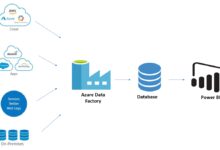Azure Standard: 7 Powerful Insights You Must Know in 2024
Ever wondered what makes Azure Standard the go-to choice for cloud solutions? It’s not just about storage or computing—it’s about reliability, scalability, and smart design. Let’s dive into what truly sets Azure Standard apart in today’s fast-evolving tech landscape.
What Is Azure Standard and Why It Matters

The term azure standard refers to a set of baseline services, configurations, and performance tiers offered by Microsoft Azure, designed to meet the needs of most businesses without overcomplicating infrastructure. Unlike premium or custom tiers, Azure Standard balances cost-efficiency with robust functionality, making it ideal for startups, mid-sized companies, and even departments within large enterprises.
Defining Azure Standard in Cloud Computing
Azure Standard isn’t a single product—it’s a category. It encompasses virtual machines, storage accounts, databases, networking, and more, all configured to deliver predictable performance at a predictable price. For example, an Azure Standard VM offers balanced CPU, memory, and storage, suitable for general workloads like web servers, development environments, or small databases.
- Designed for consistent, reliable performance
- Backed by Microsoft’s global data center network
- Supports a wide range of operating systems and applications
How Azure Standard Differs from Premium Tiers
While Azure Premium services offer higher performance, lower latency, and enhanced availability, they come at a higher cost. Azure Standard, on the other hand, is optimized for cost-conscious users who still need enterprise-grade reliability.
- Premium SSDs vs. Standard HDDs in storage
- Higher IOPS and throughput in Premium VMs
- Standard tier includes best-effort redundancy; Premium often includes zone redundancy
“Azure Standard is the sweet spot between performance and cost for most business applications.” — Microsoft Azure Documentation
Key Features of Azure Standard Services
Azure Standard isn’t just a label—it’s a promise of consistency, accessibility, and integration. Whether you’re deploying a simple website or a multi-tier application, the standard tier provides the foundational tools you need.
Compute: Virtual Machines and App Services
Azure Standard Virtual Machines (VMs) are among the most widely used resources. They come in various sizes (A, D, B series) and support both Windows and Linux. These VMs are perfect for workloads that don’t require ultra-high performance but still need reliability and scalability.
- Support for automated scaling based on demand
- Integration with Azure Monitor for performance tracking
- Available in multiple regions for global reach
Azure App Services in the standard tier allow developers to host web apps, APIs, and mobile backends without managing infrastructure. Features like auto-scaling, custom domains, and SSL support make it a favorite for DevOps teams.
Storage: Standard vs. Premium Accounts
Azure offers two main types of storage accounts: Standard and Premium. The azure standard storage tier uses magnetic hard drives (HDDs), making it cost-effective for infrequent access and backup scenarios.
- Standard Storage: Ideal for backups, logs, and static content
- Premium Storage: Built on SSDs, designed for high-performance apps
- Supports Blob, File, Queue, and Table storage
Standard storage also includes redundancy options like LRS (Locally Redundant Storage) and GRS (Geo-Redundant Storage), ensuring data durability even in the event of hardware failure.
Networking: Load Balancers and Virtual Networks
Azure Standard Load Balancer distributes incoming traffic across multiple VMs to ensure high availability. It supports both public and internal load balancing and integrates seamlessly with other Azure services.
- Supports high availability ports for multi-tier applications
- Provides outbound connectivity with SNAT (Source Network Address Translation)
- Integrates with Azure Firewall and DDoS Protection
Standard-tier Virtual Networks (VNet) allow secure segmentation of cloud resources, enabling isolated environments for development, testing, and production.
Benefits of Using Azure Standard for Businesses
Choosing azure standard isn’t just about saving money—it’s about making smart, scalable decisions that align with long-term business goals.
Cost Efficiency Without Compromising Reliability
One of the biggest advantages of Azure Standard is its pricing model. You pay only for what you use, with no upfront costs. This pay-as-you-go model is especially beneficial for startups and small businesses.
- No capital expenditure on hardware
- Flexible pricing with reserved instances for long-term savings
- Free tier options for learning and testing
According to Azure’s pricing calculator, a standard D2s v3 VM costs less than $100/month when run continuously—far cheaper than maintaining an on-premise server.
Scalability and Flexibility for Growing Needs
Azure Standard services are designed to scale. Whether you need to handle a sudden traffic spike or expand your database, Azure allows vertical and horizontal scaling with minimal downtime.
- Auto-scaling rules based on CPU, memory, or network usage
- Seamless integration with Azure Kubernetes Service (AKS)
- Support for hybrid cloud setups with Azure Arc
“With Azure Standard, we scaled our e-commerce platform from 100 to 10,000 users in under a week.” — Tech Startup CTO
Integration with Microsoft Ecosystem
If your organization uses Microsoft 365, Dynamics 365, or Power Platform, Azure Standard offers seamless integration. Single sign-on, shared identity management via Azure Active Directory, and unified billing make administration easier.
- Direct connectivity to Office 365 services
- Support for hybrid identity with Azure AD Connect
- Integration with Microsoft Sentinel for security monitoring
Azure Standard vs. Other Cloud Providers’ Standard Tiers
How does azure standard stack up against AWS EC2 Standard or Google Cloud’s Standard VMs? Let’s compare.
Performance and Uptime Comparison
All three major cloud providers offer high availability (99.9% SLA) for their standard compute instances. However, Azure stands out with its hybrid cloud capabilities and deeper integration with Windows-based systems.
- Azure: Strongest in Windows and .NET workloads
- AWS: Broadest service catalog, but steeper learning curve
- Google Cloud: Best for AI/ML and data analytics
Azure Standard VMs often outperform AWS t3.medium instances in Windows environments due to optimized drivers and native integration.
Pricing and Billing Transparency
Azure’s pricing is competitive, especially for enterprises already using Microsoft licenses. The Azure Hybrid Benefit allows customers to use existing Windows Server and SQL Server licenses to reduce costs by up to 40%.
- Azure: Transparent pricing with cost management tools
- AWS: Complex pricing with many hidden fees
- Google Cloud: Sustained use discounts, but less enterprise support
Tools like Azure Cost Management help track spending and optimize resource usage in real time.
Global Reach and Data Center Distribution
Microsoft Azure operates in 60+ regions worldwide—more than any other cloud provider. This extensive footprint ensures low-latency access and compliance with local data regulations.
- Available in regions like Africa, UAE, and India where competitors have limited presence
- Supports GDPR, HIPAA, ISO 27001, and other compliance standards
- Edge zones bring cloud services closer to end-users
Common Use Cases for Azure Standard
The azure standard tier isn’t just for generic workloads—it powers real-world applications across industries.
Web Hosting and Content Delivery
Many companies use Azure Standard App Services to host websites and APIs. With built-in SSL, custom domains, and auto-scaling, it’s a hassle-free solution for digital presence.
- Supports WordPress, Node.js, Python, .NET, and more
- Integrates with Azure CDN for faster content delivery
- Automatic backups and staging slots for zero-downtime deployments
Development and Testing Environments
Dev teams rely on Azure Standard VMs to create isolated, reproducible environments. These can be spun up and torn down quickly, reducing costs during non-working hours.
- Pre-configured images for common development stacks
- Integration with GitHub Actions and Azure DevOps
- Support for containerized apps via Docker and Kubernetes
Backup and Disaster Recovery
Azure Standard Storage is widely used for backup solutions. Services like Azure Backup and Site Recovery use standard-tier storage to archive data securely.
- Automated backup schedules with retention policies
- Geo-replication for disaster recovery
- Integration with on-premise systems via Azure Backup Server
“We reduced our backup costs by 60% by switching to Azure Standard Storage.” — IT Manager, Financial Services Firm
How to Get Started with Azure Standard
Starting with azure standard is easier than you think. Whether you’re a developer, IT admin, or business owner, Azure provides the tools to get up and running quickly.
Creating Your First Azure Account
Visit Azure Free Tier to sign up for a free account. You’ll get $200 in credits to explore services for 30 days, plus access to over 55 always-free services.
- No credit card required for the free tier
- Access to learning paths and sandbox environments
- Free training on Microsoft Learn
Deploying a Standard Virtual Machine
Once logged in, navigate to the Azure Portal and select “Create a resource.” Search for “Virtual Machine,” choose a standard size (like D2s v3), and configure your OS, network, and authentication.
- Select Ubuntu, Windows, or CentOS from the marketplace
- Enable auto-shutdown to save costs
- Use Azure Bastion for secure, browser-based access
Monitoring and Optimizing Performance
After deployment, use Azure Monitor to track CPU, memory, and disk usage. Set up alerts for unusual activity and use Advisor to get cost and performance recommendations.
- Enable diagnostic settings for detailed logs
- Use Log Analytics to query performance data
- Apply tags for resource grouping and billing tracking
Future Trends and Innovations in Azure Standard
The azure standard tier is not static—it evolves with technology. Microsoft continuously enhances standard services with new features and integrations.
AI and Machine Learning Integration
Even standard-tier services are gaining AI capabilities. For example, Azure App Service now supports integration with Azure Cognitive Services for vision, language, and speech processing.
- Use AI-powered chatbots in standard web apps
- Integrate anomaly detection in monitoring workflows
- Leverage Azure OpenAI Service with standard compute
Sustainability and Green Cloud Initiatives
Microsoft is committed to sustainability. Azure Standard services run on renewable energy in many regions, and the company aims to be carbon negative by 2030.
- Azure Sustainability Calculator helps estimate carbon footprint
- Efficient data centers reduce energy consumption
- Water-cooled servers in underwater data centers (Project Natick)
“Sustainability isn’t a feature—it’s a responsibility. Azure Standard is built with the planet in mind.” — Microsoft Sustainability Report
Edge Computing and IoT Expansion
Azure Standard is expanding to the edge. Services like Azure IoT Edge allow standard-tier VMs to process data closer to the source, reducing latency for industrial and retail applications.
- Run AI models on edge devices using standard compute
- Integrate with Azure Digital Twins for smart environments
- Support for 5G and private LTE networks
What is Azure Standard used for?
Azure Standard is used for a wide range of applications including web hosting, development and testing, backup and disaster recovery, and running enterprise applications. It provides a cost-effective, reliable foundation for businesses leveraging cloud computing.
Is Azure Standard free?
No, Azure Standard is not free, but it offers a pay-as-you-go pricing model. New users can access a free tier with $200 in credits and over 55 always-free services to explore Azure capabilities without upfront cost.
How does Azure Standard compare to AWS EC2 Standard?
Azure Standard and AWS EC2 Standard offer similar performance and pricing. However, Azure excels in hybrid cloud integration, Windows workloads, and global data center reach, while AWS has a broader service catalog and deeper enterprise adoption in some sectors.
Can I upgrade from Azure Standard to Premium?
Yes, you can easily upgrade from Azure Standard to Premium services. For example, you can change a VM size or switch from standard to premium storage with minimal downtime, allowing flexible scaling as your needs grow.
Does Azure Standard support high availability?
Yes, Azure Standard supports high availability through features like Availability Zones, Load Balancers, and Geo-Redundant Storage. While not as robust as Premium tiers, it still offers 99.9% uptime SLA for most services.
In conclusion, azure standard is more than just a baseline—it’s a powerful, flexible, and cost-efficient gateway to the cloud. Whether you’re launching a new app, scaling your business, or securing your data, Azure Standard provides the tools you need without the complexity or cost of premium tiers. With Microsoft’s continuous innovation in AI, sustainability, and edge computing, the future of Azure Standard is brighter than ever. Now is the perfect time to explore what it can do for your organization.
Further Reading:









